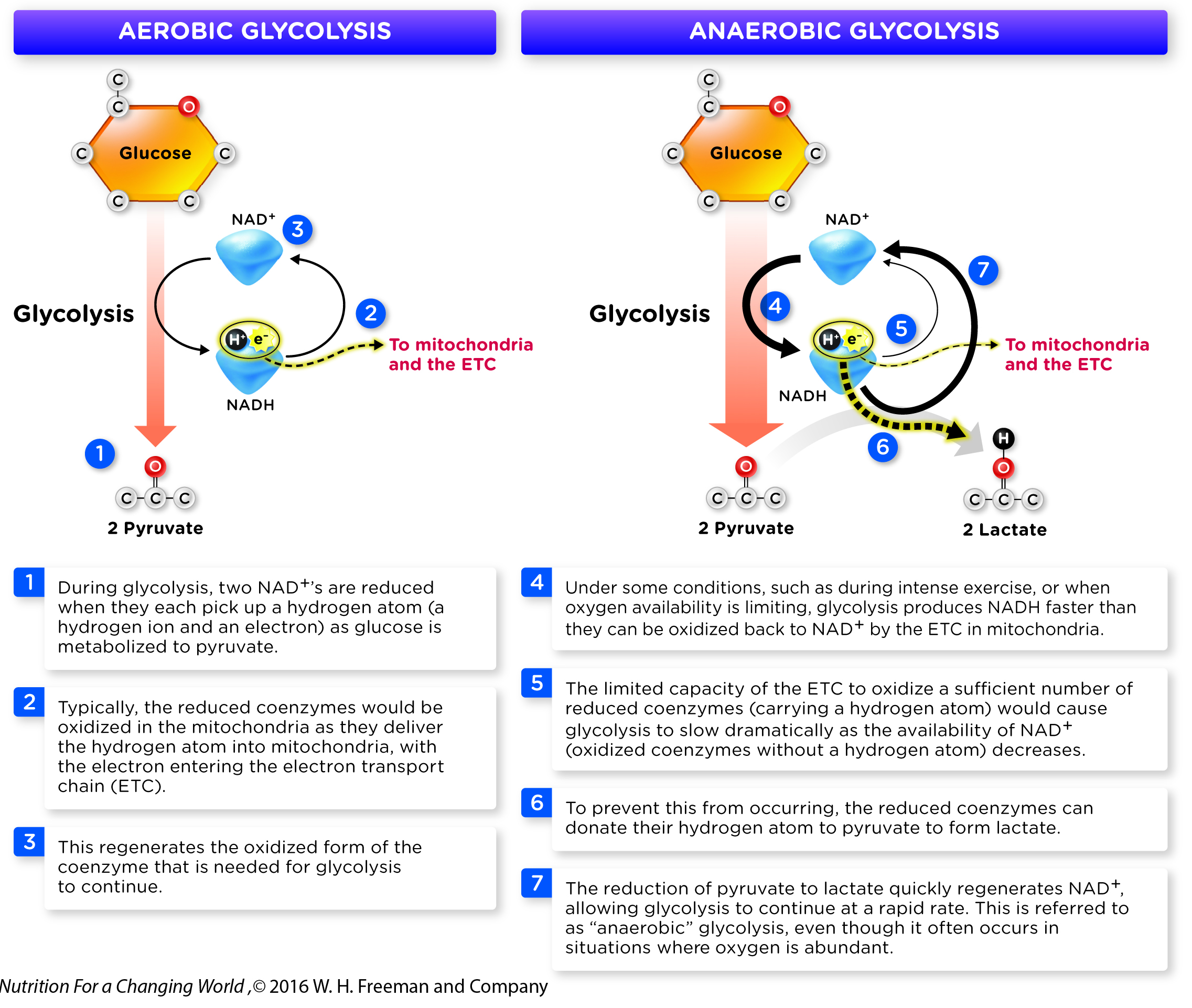FATTY ACID OXIDATION OCCURS IN THE MITOCHONDRIAL MATRIX
Unlike glucose, the oxidation of fatty acids for energy occurs completely in mitochondria and only in aerobic conditions. Before fatty acids can be transported into the matrix they must be activated by the enzymatic attachment of coenzyme A, a reaction that requires energy input equivalent to that of converting two molecules of ATP to ADP.
Once fatty acids have been transported into the mitochondrial matrix they are oxidized by a process called beta-
For an 18-
Tallying total ATP production by fatty acid oxidation
Recall that each turn of the citric acid cycle produces four reduced coenzymes and the equivalent of one ATP, so the oxidation of these nine acetyl-
Fat versus glucose—ATP production and oxygen consumption
The oxidation of fatty acids yields more ATP per carbon atom than is produced from glucose oxidation. Oxidation of an 18-
Although the oxidation of fats produces more ATP per carbon than is obtained from carbohydrates, it also requires a greater amount of oxygen consumption. The complete oxidation of an 18-
Aerobic Versus Anaerobic Glycolysis: In aerobic glycolysis reduced coenzymes are oxidized by the electron transport chain, while in anaerobic glycolysis reduced coenzymes are oxidized by converting pyruvate to lactate.

|
|
QuestionWhat are two ways that the coenzymes reduced during glycolysis can be returned to their oxidized form? 1). Reduced coenzymes are oxidized in the mitochondria as they deliver the hydrogen atom into mitochondria, with the electron entering the electron transport chain (ETC). 2). When oxygen is limited, reduced coenzymes are able to donate their hydrogen atom to pyruvate to form lactate; the electron enters the electron transport chain (ETC). QuestionWhen rates of glycolysis are very high, how are the vast majority of coenzymes returned to their oxidized form? When rates of glycolysis are high, coenzymes are able to return to their oxidized form by transferring their hydrogen atom to pyruvate transforming it to lactate. This quickly regenerates oxidized coenzymes that can then participate in another round of glycolysis. QuestionHow would the elimination of mitochondria from skeletal muscle affect both the availability of oxygen in muscle, and its reliance on anaerobic glycolysis for ATP production? If muscle cells had no mitochondria, they would not be able to obtain energy through aerobic respiration (respiration with oxygen). They would have to use anaerobic glycolysis to produce ATP. This process converts glucose into pyruvate, but it is less efficient than aerobic respiration so only a small amount of the energy from glucose is released. |
| Carbons | ATP produced | O2 consumed | ATP/O2 | |
| Three glucose molecules | 18 | 96 | 18 | 5.3 |
| One 18- |
18 | 120 | 26 | 4.6 |
An examination of the ratio of ATP produced to oxygen consumed during carbohydrate and fat oxidation reveals that carbohydrate oxidation produces more ATP per molecule of oxygen consumed.
